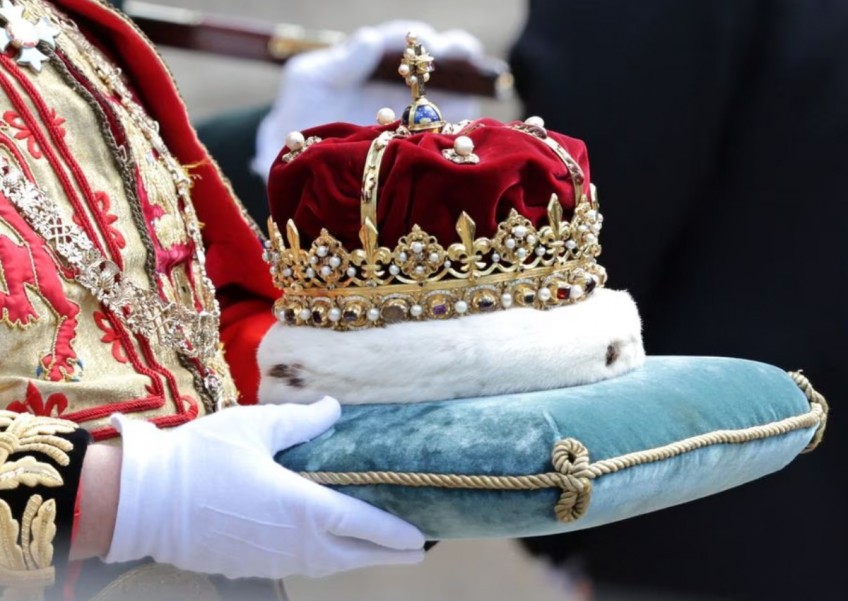Scotland marks coronation of King Charles and Queen Camilla


EDINBURGH - Scotland marked the coronation of King Charles and his wife Camilla on Wednesday (July 5) with a grand procession full of pageantry and a solemn church service where he was presented with the "Honours of Scotland", Britain's oldest crown jewels.
Charles and Camilla were crowned in London's Westminster Abbey in May in front of about 100 world leaders in Britain's biggest ceremonial event for seven decades.
The 74-year-old, who is said to have a deep affection for Scotland, succeeded his mother as monarch of the United Kingdom and 14 other realms when Queen Elizabeth died in September.
But in a nod to the historical fact that England and Scotland had different monarchs until the crowns were united in 1603, separate Scottish celebrations to herald his coronation were held on Wednesday.
Crowds gathered on the famous Royal Mile in Edinburgh to cheer a People's Procession, involving about 100 people representing various aspects of Scottish life, and a Royal Procession, featuring hundreds of service personnel, along with military pipe and drum bands.
But, also present were about 100 anti-monarchists who booed and loudly chanted "Not my king".
At a National Service of Thanksgiving and Dedication in the city's St Giles' Cathedral, Charles was presented with the Honours of Scotland - the historic Scottish crown jewels which have been used in royal ceremonies for the last five centuries.
These included the Crown of Scotland, made for Scottish King James V in 1540 and used to crown Mary Queen of Scots in 1543, and the Sceptre, thought to have been given to James IV by Pope Alexander VI in 1494.
"By the symbol of this crown, we pledge our loyalty, entrusting you to reign as our king in the service of all your people," said Alexander Douglas-Hamilton, the Duke of Hamilton and Brandon and Scotland's most senior peer, as he presented Charles with the crown on a cushion.
"In receiving this crown, I so promise by God’s help," replied Charles, who was joined at the service by his eldest son and heir Prince William and his wife Kate.
The Stone of Destiny, a symbol of Scottish nationhood brought to England in the 13th century and returned to Scotland in 1996, was also moved to the cathedral for the service.
[[nid:628725]]
A 21-gun salute was fired from Edinburgh Castle, with a procession back to the Palace of Holyroodhouse before the Red Arrows aerobatic team performed a flypast.
As at the coronation itself, there were protests by opponents of the monarchy, with polls suggesting the institution is less popular in Scotland than in the rest of the United Kingdom.
Police said they had arrested two women, aged 20 and 21, after they allegedly attempted to climb over a crowd safety barrier on the Royal Mile.
The question of Scottish independence is also still a prominent political issue and some who support secession also want an elected head of state.
"This pointless vanity parade in Edinburgh will cost Scottish taxpayers millions of pounds, and for what? So Charles can once again be centre of attention for a day," said Graham Smith, the chief executive of anti-monarchist group Republic, who was arrested at the coronation in London in May.